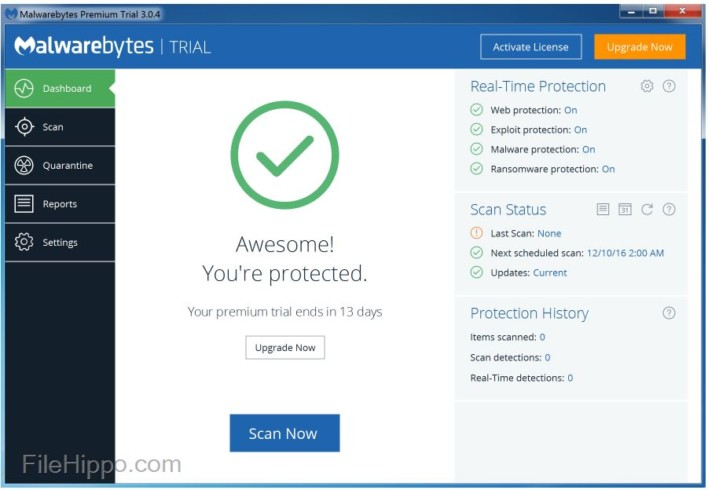
When I asked Malwarebytes about its failure to detect MacRansom the company said that it was guarding against MacRansom in 2017, but a year later it had stopped. Malwarebytes failing to detect ransomware. But as I mentioned earlier, that is by design. Malwarebytes didn’t detect it while it was downloading, installing, or active.

For protection is got 4.5 out of six with protection against 0-day malware attacks at 96.2% compared to the industry standard of 98 percent but for malware from the last four weeks it got 100%, as you'd expect.Finally, I decided to see how it would stand up against a piece of ransomware and chose the MacRansom sample. It got four out of six on performance with slowing down of the machine it was on more than the average. In AV-test results it achieved a usability score of six out of six, with no false detections. This makes it more effective but it still has a way to go - it can't match software packages like BitDefender and Norton 360 (opens in new tab). If you have the paid version of Malwarebytes then you'll also have live, real-time protection. If you want total protection, something like BitDefender 2020 (opens in new tab) is your best option. Since both are free it seems silly not to use them.

This is where having both Windows Defender and Malwarebytes is a great double team way to stay protected and secure. What it can't do is the malware side of things for ransomware, for example. Windows Defender, for example, is now a really capable antivirus software that is included for free with Windows 10. But to avoid infection in the first place getting anti-virus software is a good idea. If you're already infected, this is what you want to get you cleaned out. This is why it works well as a supplementary layer of security. Malwarebytes lacks some of the real-time protection you'll get from AV software, like a firewall, in the free version at least. Best smart locks 2022: Front door smart locks for your home or rentalīest home safes 2022: The best cheap safes and fire-resistant options


 0 kommentar(er)
0 kommentar(er)
